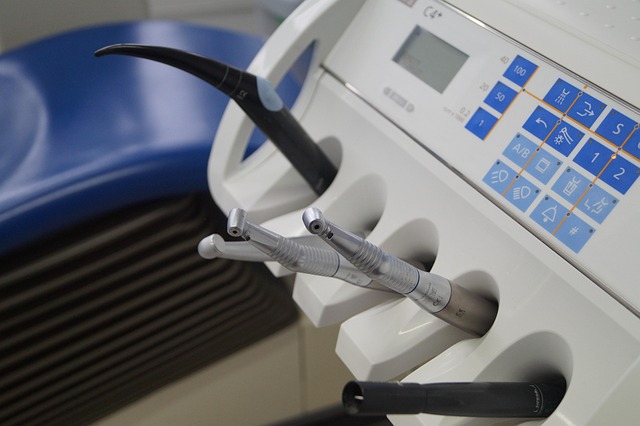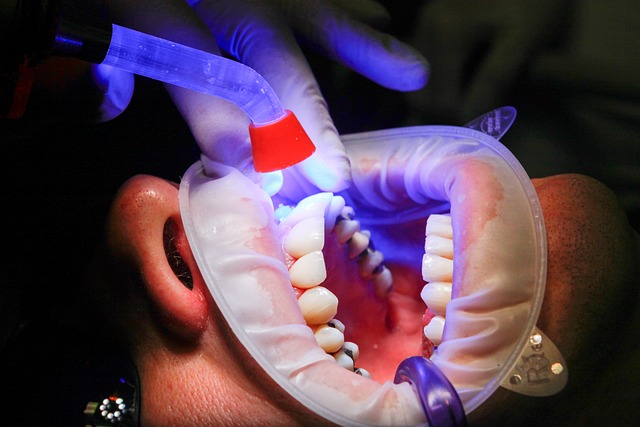Dental malpractice insurance protects dentists from financial ruin caused by patient injuries or legal claims resulting from misdiagnosis, incorrect treatment plans, procedural errors, or inadequate informed consent. It covers legal fees, settlement costs, and judgments, safeguarding against costly lawsuits and reputational damage. Dentists have various options tailored to their needs, with specialized coverage for procedures like oral surgery. When choosing a provider, research insurers' reputations and compare quotes. A robust claims strategy includes detailed patient records, industry standards adherence, and risk management. Cost-effective solutions involve comparing providers, understanding policy details, and regularly reassessing insurance needs.
In the high-stakes world of dentistry, ensuring patient safety and managing risks are paramount. Malpractice insurance for dentists is not just a recommendation—it’s a necessity. This comprehensive guide delves into the crucial aspect of dental practice protection, exploring common risks, the significance of liability coverage, and strategies to navigate claims. From understanding dental malpractice to selecting the right insurer and managing costs, this article equips dentists with essential knowledge for navigating today’s legal landscape.
- Understanding Dental Malpractice: Common Risks and Claims
- The Importance of Liability Insurance for Dentists
- Types of Dental Malpractice Insurance Policies
- How to Choose the Right Malpractice Insurance Provider
- Claim Process and Defense Strategies for Dentists
- Cost-Effective Solutions: Managing Premium Expenses
Understanding Dental Malpractice: Common Risks and Claims

Dental malpractice insurance is a critical safety net for dentists, protecting them from potential financial devastation resulting from patient injuries or legal claims. These risks are inherent in any dental practice, regardless of how careful and competent the dentist may be. Common scenarios leading to malpractice claims include misdiagnosis, incorrect treatment plans, errors during procedures, and failure to obtain informed consent.
For instance, a dentist might mistakenly drill into a healthy tooth instead of a decayed one or prescribe an inappropriate medication causing adverse reactions. Patients, if harmed by these errors, could file lawsuits seeking compensation for pain, suffering, and related medical expenses. Malpractice insurance covers legal fees, settlement costs, and judgments against the dentist, providing financial protection and ensuring they can continue practicing without the burden of overwhelming debt.
The Importance of Liability Insurance for Dentists

For dentists, liability insurance is not just a consideration—it’s a necessity. As medical professionals, they’re entrusted with patients’ health and well-being, which carries significant risk. Malpractice insurance for dentists safeguards against potential financial disasters stemming from errors or omissions during dental procedures. These can include claims of negligence, injury to patients, or damages caused by equipment malfunctions.
Without adequate coverage, a single lawsuit could result in substantial legal fees, settlements, and damage to one’s reputation. Liability insurance provides financial protection, ensuring dentists can focus on patient care without the constant burden of potential legal repercussions. It offers peace of mind, enabling dental professionals to practice with confidence, knowing they’re shielded from unforeseen circumstances.
Types of Dental Malpractice Insurance Policies

When it comes to dental malpractice insurance, there are several options tailored to meet the unique needs of dentists. These policies are designed to protect dental professionals from potential financial losses and legal liabilities arising from medical errors or negligence during dental procedures. Generally, they cover a wide range of risks specific to the dental field, ensuring practitioners are safeguarded against claims of misdiagnosis, improper treatment, or even equipment malfunctions.
The most common types include professional liability insurance (also known as malpractice coverage), which protects dentists against claims of negligence resulting in patient injury. Additionally, dental malpractice policies may incorporate extended coverage for specific procedures, such as oral surgery or endodontic treatments, which carry higher risks. Some insurers also offer optional endorsements for dental practices with specialized services, ensuring comprehensive protection.
How to Choose the Right Malpractice Insurance Provider

When selecting a malpractice insurance provider for your dental practice, it’s crucial to conduct thorough research. Look for insurers specializing in dental malpractice coverage, as they understand the unique risks and needs of dentists. Check their reputation, financial stability, and customer reviews to ensure reliable service and claims handling.
Consider the policy limits, coverage options, and exclusions carefully. Understand what’s included in the base policy and whether add-ons are available to cater to your specific practice needs. Compare quotes from multiple providers to find the best value for money without compromising on quality and protection for your dental practice.
Claim Process and Defense Strategies for Dentists

When dealing with potential claims, having a robust strategy is key for dentists. The claim process for malpractice insurance often involves several steps: an initial report of the incident, investigation by the insurance company, gathering evidence and medical records, and finally, negotiations or litigation. Dentists should be prepared to communicate openly with their insurance providers throughout this process, ensuring all relevant information is disclosed promptly.
Effective defense strategies can significantly impact outcomes. These include maintaining detailed records of patient care, staying up-to-date with industry standards and regulations, and participating in continuing education programs. Additionally, dentists can proactively manage risks by implementing evidence-based procedures, utilizing technology to minimize errors, and fostering open communication with patients about potential risks and treatment alternatives.
Cost-Effective Solutions: Managing Premium Expenses

Many dentists often face a challenge when it comes to managing their expenses, particularly in terms of medical liability insurance premiums. However, there are cost-effective solutions available that can help alleviate this burden. One strategy is to compare different providers and policies to find the best rates tailored to individual practices. By shopping around, dentists can identify affordable options without compromising on quality coverage.
Additionally, reviewing policy details and understanding what’s included in malpractice insurance for dentists is essential. Some companies offer discounts for maintaining a clean claims history or bundling multiple types of insurance. Taking advantage of these incentives can significantly reduce premium costs. Regular reassessments of insurance needs are also beneficial as they allow dentists to adjust their coverage accordingly, ensuring they’re not over-insuring and saving money in the process.
